This is Sarah.
She got her avoidant ex back twice (you can see I interviewed her twice 😉 .)
And this was despite that fact that he said “they’d never get back together…”
And again, he did this twice.
I interviewed Sarah to learn exactly what traits her avoidant ex found attractive, and I learned that she unknowingly exhibited 6 specific characteristics that likely re-attracted her avoidant.
- The unconscious draw to anxious partners
- A partner willing to respect independence
- Avoidants want what they can’t have
- The contrast effect
- Competition
- Space
Sarah started this journey trying and failing for months then she learned a fundamental secret about avoidants and did one thing that would change everything.
Let’s start first though at the beginning,
Trait #1: The Unconscious Draw To Anxious Partners
You’re probably sitting there and thinking that this is an odd trait to start with.
After all, don’t avoidant people hate, “high strung” or “anxious” people?
Well, when I say that their relationship with anxious individuals is a “love/hate” relationship I mean it literally.
Look at this,
This is an excerpt from an article from Psychology Today written by, Stephanie A. Sarkis Ph.D.
She says,
The attraction between these two attachment styles can stem from their unconscious desire to fulfill unmet emotional needs from childhood.
Now, we know from attachment theory that typically from a young age, individuals who develop an avoidant attachment style often experience rejection of their emotional needs by caregivers.
This can manifest in various ways, such as a parent dismissing a child’s tears with remarks like,
“Boys don’t cry, man up,” or it can be even more subtle, by not responding adequately to the child’s emotional expressions of sadness or need.
Now, here’s the wild part.
According to the national library of medicine,

What Are Your Chances of Getting Your Ex Boyfriend Back?
Take the quizGenetic research indicates that up to 45% of the variability in anxious and 39% in avoidant adult attachment style could be explained by genetic causes.
So, while some avoidant attachment style can be chalked up to genetic inheritance most avoidance in adults is likely the result of circumstance.
I say this because a huge indicator of what your attachment style is, will be learned from your caregiver.
And part of why this is, the insecurely attached caregiver reinforces the wrong types of behavior. For example, a parent with an avoidant style might give positive attention when the child is happy but withdraw or try to change the child’s mood during vulnerable moments.
This avoidance stems from the parents own internal discomfort with their own vulnerable emotions, which ultimately leads them to reject similar emotions in their child.
As a result, the child learns to associate vulnerability and emotional needs with negative responses, like disgust. This response becomes an unconscious part of their psyche, leading them to feel self-disgust whenever they experience their own vulnerabilities.
They are conditioned to believe that showing vulnerability will lead to rejection or disgust, a belief that deeply influences their emotional interactions and attachment style in adulthood.
Yet, deep down an avoidant knows they are missing something.
Let’s go back to that psychology today article,
An avoidant partner may seek the need for intimacy their partner possesses because they think they are missing out on a crucial part of intimate relationships.
The avoidant, seeks what was denied them in childhood but, as the psychology today article points out,
However, what each partner seeks can also cause their undoing. What attracts us to another person also tends to gnaw at us over time.
Which is why I say it’s a literal love/hate relationship.
They are unconsciously drawn to the anxious individual, knowing that the anxious individual has the intimacy they have been denied but their conditioning prevents that anxious person from ever getting close.
Trait #2: A Partner Willing To Respect Independence
So, the thing that struck me about what Sarah said in our interview was that it was only after buying a house and moving in together that her avoidant ex freaked out and broke up with her without really much of an explanation.
Now, I’ve talked in length about this concept of insecure attachment core wounds.
The TLDR though is that every insecure attachment has what I’ve coined as a core wound.
Core Wound= It is essentially something that triggers their insecure coping mechanisms.
- For an anxious person: It’s a fear of being abandoned.
- For an avoidant person: It’s a fear of losing their independence.
- For a fearful avoidant: They have both core wounds
But here’s where the nuance comes into play with the core wound concept.
Every single avoidant has a different threshold for what they are willing to endure before getting triggered.
Look at this,
This is a list of some of the most common trigger points that I can think of,
- Texting romantically
- Talking on the phone romantically
- Going a date
- Asking to be “official”
- Getting a dog together
- Moving in together
- Getting engaged
- Getting married
- Buying a house
- Having children
Do you notice a trend?

What Are Your Chances of Getting Your Ex Boyfriend Back?
Take the quizThey all revolve around a commitment or at least an assault on the avoidants independence. So, in Sarah’s case she got to about here before her avoidant ex was triggered and broke up with her.
Every avoidant has their own individual trigger limit.
For some they can maybe make it to the “having children phase” before they’re triggered.
For others they maybe get triggered when you ask them to be official.
Now, the big question you’re probably having when you look at this list is how the heck do you get an avoidant through it without triggering them.
Well, I think that’s answered by looking at the age-old parable of how you boil a frog.
You see, the story goes like this. If a chef puts a frog in boiling water then the frog will detect the heat and immediately jump out of the pot.
But if the chef puts the frog in water that isn’t boiling but slowly turns the heat up the frog won’t detect it and WA-LAH… you’ve got a cooked frog.
Just one problem.
Scientifically this parable isn’t true but for the purposes of this discussion let’s pretend it is.
The problem Sarah had with her avoidant was she moved through this list way too quickly.
If she had just slowed down and convinced her avoidant that he wasn’t going to lose his independence, she might have seen better results.
Trait #3: Avoidants Want What They Can’t Have
In addition to interviewing Sarah, a few months ago I interviewed, Dr. John Paul Garrison who is Clinical & Forensic Psychologist based out of Georgia. He also runs the popular YouTube channel, Dr. G Explains,
Anyways, he said something I found to be interesting in the interview,
So, his argument, which I think is right, is that avoidants have these coping mechanisms in place to deal with anxiety.
In fact, pretty much every insecure attachment style does. It’s just that avoidants have all this machinery in place to keep people at an arm’s length.
They’ve built up this wall to keep people from getting close to them. We’ve already talked a little bit about why that is… their caregivers.
But what Sarah hits on here, (they want what they can’t have), is a lot more profound than you might initially believe.

What Are Your Chances of Getting Your Ex Boyfriend Back?
Take the quizTake a look at this, this is the book, Attached’s definition of the phantom ex ,
One of the consequences of devaluing your romantic relationships is that you often wake up long after the relationship has gone stale, having forgotten all the negative things that annoyed you about your partner, wondering what went wrong and reminiscing longingly about your long-lost love. We call this the phantom ex phenomenon.
So, let’s play a little game.
An avoidant is given two options.
- A relationship with a human being who wants a deeper commitment.
- Or a fantasy with a human being they used to be with but asks no deeper commitment of them
Which do they prefer?
Well, obviously they’re going to prefer fantasy.
Not only is it unattainable, which helps ensure they keep their independence but this constant yearning for the phantom ex forms the foundation for the wall that they put up to guard their heart.
It’s all part of that coping strategy that Dr. John Paul Garrison was talking about.
Trait #4: The Contrast Effect
Sarah hits on something here that isn’t talked about a lot and that’s the concept of contrast.
I see a lot of breakups in my line of work and a lot of times you hear the same phrases given by exes as a reasoning for the breakup.
- Boring…
- Too Stable…
- Complacent…
Let me decode what’s really happening here.
Look at this.
This is my stability and mystery scale.
You see, we human beings are quite complicated individuals. On the one hand we want stability and on the other hand, we want mystery.
Yet, these two qualities are completely opposites from one another.
What often happens in relationships is that at the beginning of a relationship an avoidant falls in love with someone based on their stability and mystery ratio.
For example, maybe you have a 60:40 ratio.
- 60% Mystery
- 40% Stability
Another person they fall for could have a 50/50 ratio.
- 50% Mystery
- 50% Stability
Whatever the ratio is it doesn’t really matter because from what I have observed the same phenomenon occurs. The fluid nature of the stability and mystery scale changes the ratio.
So, what maybe started out as a 50/50 split slowly starts to tip in favor of stability so that by the end of a relationship things look like this,
- 70% stability
- 30% mystery
The avoidant internally is going,
“Wait, what happened here? This isn’t the person I fell in love with.” This actually contributes to the avoidants overall perception of you as well.
And here’s where we come back to that clip I played of Sarah earlier
She says she went out and…
- Bought new clothes
- Dyed her hair
- Put extensions in
All of this creates a contrast of what her avoidant ex’s perception was of her from when the breakup occurred .
But as I was listening to her talk about this another, perhaps more alarming thought came to mind.
A few weeks ago I filmed a video on narcissism where I asked one simple question.
Are all avoidants narcissists?
The answer was of course, nuanced but here’s where I landed,
Grandiose narcissism will be a stronger predictor of the avoidant attachment dimension, in relation to vulnerable narcissism.
If you want to learn what the difference between grandiose narcissism and vulnerable narcissism is I recommend you watch the video.
Here’s the important bit that is relevant for this discussion.
There is a definite link between narcissism and avoidant behavior.
However, I would say that most avoidant individuals are not full-blown narcissists. Rather, they exhibit very narcissistic traits.
And one of those traits might explain what’s happening to Sarah here.
Ok, so check this out.
This is the narcissistic abuse cycle.
As you can see, narcissistic relationships often follow a pattern of idealization followed by devaluation.
This of course led her avoidant ex to discard her.
What I think happened here is that Sarah’s transformation makes her appear as a “new” or “improved” person, her avoidant ex, who exhibits some narcissistic traits might experience a rekindling of the idealization phase, seeing Sarah as desirable and perfect again.
Trait #5: Competition
I noticed Sarah said something else particularly interesting about dating other people.
She actually dated her avoidant exes best friend before him.
Now, why does this work?
Why do avoidants find this attractive?
Well, I think it has a lot to do with the interplay between three things.
- Safety In Unavailability
- Fear of Intimacy
- Challenge and Competition
Let’s tackle the Safety In Unavailability first:
Check this out,
According to Free to Attach,
Avoidants are free to long for an ex once that person is unavailable out of the relationship, and typically out of contact so they are untouched by actual engagement and their deactivation systems aren’t triggered,
For avoidant individuals, attraction to someone who is unavailable provides a safe distance from true intimacy. We covered this with the phantom ex phenomenon already.
Anyways, since the person they are attracted to is not fully available, there is a built-in barrier to getting too close, which aligns with the avoidant’s need to maintain emotional distance.
Fear of Intimacy:
Avoidant individuals often fear intimacy and the vulnerabilities it brings. Being attracted to someone who is taken means there’s less risk of a deep, intimate connection developing, which can feel safer for someone with an avoidant attachment style.
It’s all there in the machinery.
Remember, you can explain most avoidant behavior by looking at the avoidants core wound, their insatiable need for independence.
Unconsciously they are attracted to individuals for which they know the relationship is doomed. This keeps them safe.
Challenge and Competition:
Some avoidant individuals might be drawn to the challenge or the thrill of competing for someone’s affection, seeing it as a game or conquest rather than seeking a genuine connection.
But why compete?
One word, the thrill.
When I was in high school I had a friend who was obsessed with “the thrill of the chase.”
And quite frankly, he was a combination of the two worst factors you could imagine.
Avoidant AND Good Looking.
Which means he unknowingly victimized a lot of girls.
It was always the same pattern.
- He’d get obsessed with a girl.
- Chase after them.
- Win their hearts
- Bask in a mini honeymoon period
- And the moment that honeymoon period wore off he’d drop the girl and move on to the next one.
I never asked him why he was doing this BUT I didn’t have to. He volunteered it one day.
He said, and I quote:
“There’s nothing like the moment in time at the beginning of a relationship before it gets too serious.”
I’ve often accused avoidants of jumping from one relationship to another simply for the honeymoon period and it seems that was what my friend was doing as early as high school.
But there’s another layer to it here that I haven’t really covered.
My friend would like it if we liked the same girl. I didn’t, of course, because the girls always chose him. He reveled in it to the point that I wouldn’t tell him when I’d like a girl.
But this goes directly into the challenge and competition aspect.
Trait #6: Space
From Sarah’s lips to your ears. In my opinion, this is the one thing that she did that changed everything for her.
- She did a no contact rule.
- She gave her avoidant space.
- Seems so simple, right?
Well, it’s actually not. More on why in a moment.
Now, this shouldn’t come as a shock to anyone.
I’ve made countless videos over the years on my YouTube channel talking about this trait and why it’s so attractive.
Ultimately though I think it boils down to one simple fact.
The most common relationship pairing we see is,
“Avoidant + Anxious”
Wait a moment. Let’s visualize this a bit differently.
Imagine you have two people in a relationship.
One that is avoidant
- One that is anxious
Now, each of these people has a battery.
When the battery is full, they are feeling great. When it’s low, they do not feel so great.
So, you have these two people in relationships but what fills their batteries up are opposite things.
- For the avoidant, they need space to recharge and feel that they still have their independence.
- For the anxious partner, they need re-assurance to feel that they aren’t going to be abandoned.
And at first… everything is great.
Honeymoon period is going strong.
The avoidant is giving re-assurance.
The anxious person isn’t being overbearing because they are getting re-assurance.
But just like I said in an earlier trait, once that honeymoon period wears off that’s when things start to go downhill.
The avoidant partner’s battery begins to dissipate first. They usually nitpick something the avoidant did.
This causes the anxious partner’s battery to begin to deplete. This in turn causes the anxious partner to naturally search for the one thing it knows will replenish the battery, re-assurance.
Of course, every time the anxious person seeks re-assurance the avoidants battery depletes so that in the end both partners batteries are depleted.
Now, let’s compare that to what Sarah did.
She labels herself as an anxious individual.
You can see that here,
However, she goes against what her anxiety is telling her to do.
She gives her avoidant ex space. This allows his battery to begin to fill back up.
Which is why she starts getting these types of results,
Space is the single most important thing to give to an avoidant. It’s the single more attractive thing to them.
Alright though, hold up for a moment.
I’ve just taken you through the six traits that avoidants find most attractive but there’s something still bugging me.
Are they even worth attracting?
Should You Even Care About Attracting Avoidants?
After all, I did end up interviewing Sarah a second time.
And guess what, this was after her avoidant ex had broken up with her again.
Of course, she moved on to someone else by then and, of course, this drove her avoidant ex nuts to the point where he was trying to win her back again.
But that’s beside the point.
Should you even care about attracting these individuals or, as many people in the comments section of my YouTube channel say, should you avoid them like the plague?
I think that the most important question to answer here is why?
Why do you want an avoidant ex back?
Is it because you’re afraid of being alone?
Is it because you believe that the relationship can be improved with a better understanding of each other’s attachment styles and needs?
I’m not sure there’s any answer I can give you in this video that will satisfy you.
Here’s what I’ll say.
If the most important thing for attracting an avoidant is to give them space then why not use that space, that time away from the avoidant to find something that you care about just as much as them.
And then you can make your decision on whether you want to try to attract them.
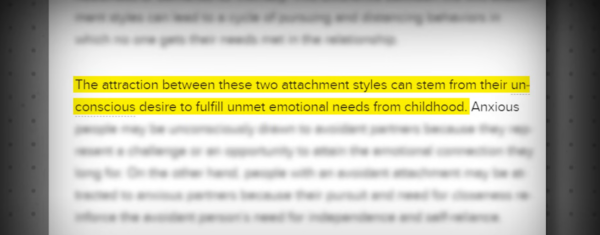
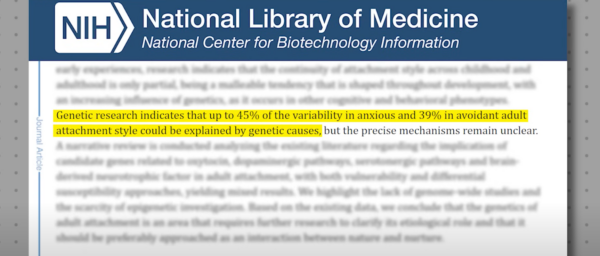
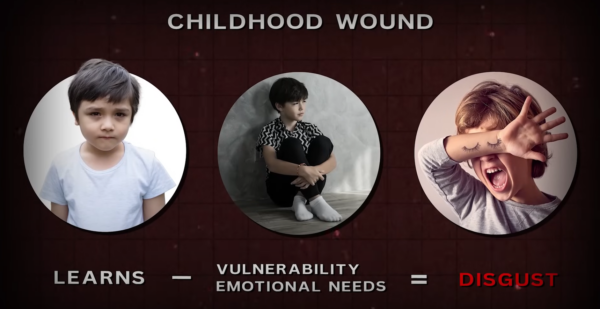




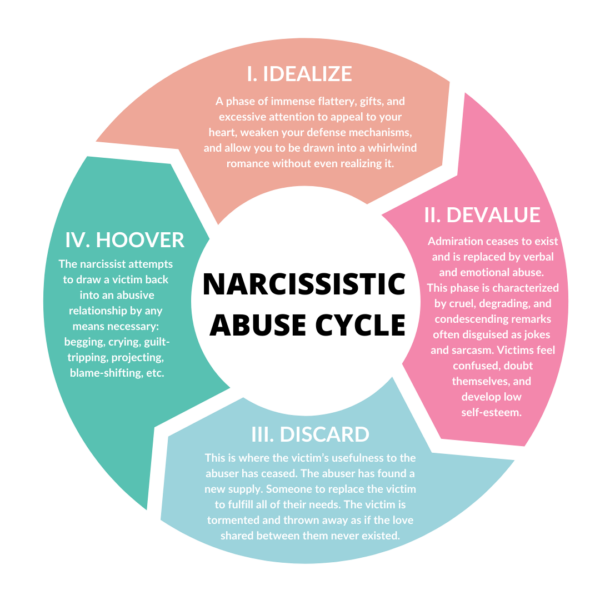

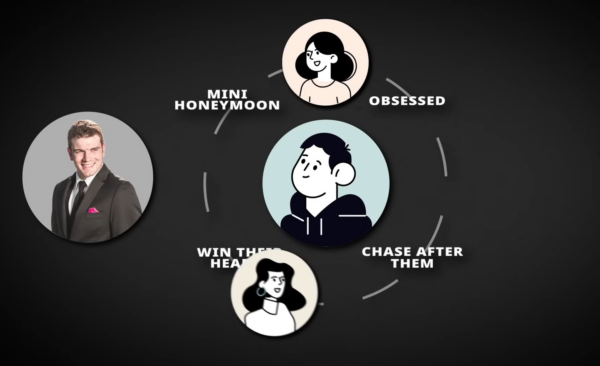
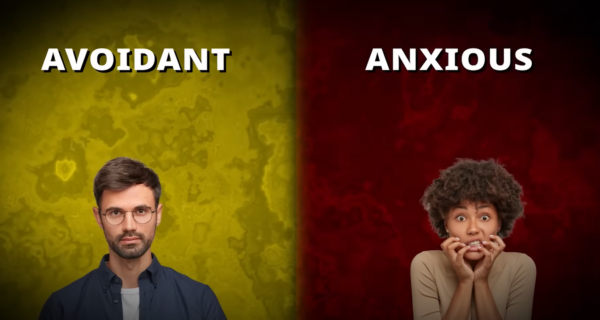 One that is avoidant
One that is avoidant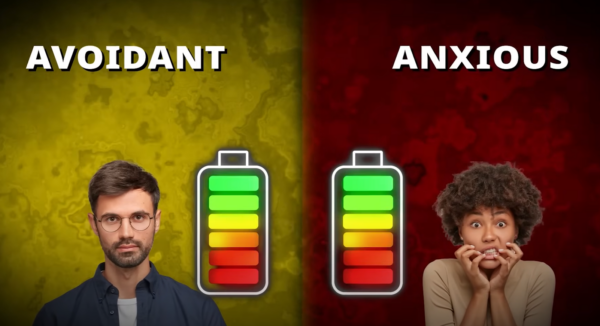
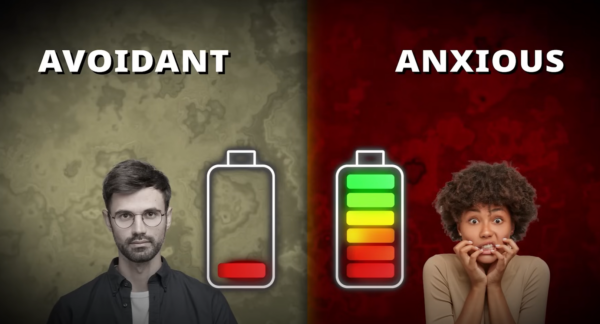
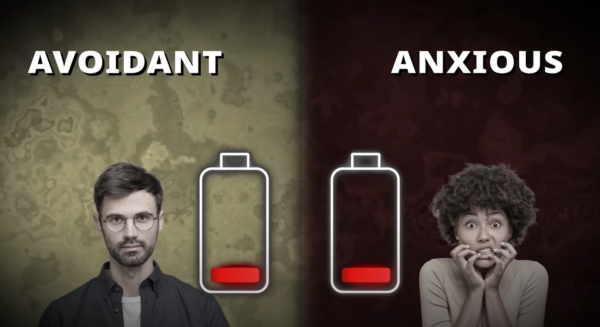
Rashid
December 21, 2024 at 9:51 pm
This is a great page. I just been dumped by an avoidant (female) it feels brutal also because it comes after we’ve been actually good and getting close. But this is a trigger to avoidance that sense their independence is diminishing. It makes a lot more sense now
J
December 17, 2024 at 4:23 am
I am an avoidant (female). I was unintentionally mean and insensitive to my male partner (anxious); however, ignorance is inexcusable. In all these articles it is sad to see there is little to no expectations for avoidants, seem we have a lot to learn. I always knew there was something missing in our connection (14 years later he left me), just never new what. I new a feared vulnerability because it hurts so badly when I am let down. So, I think the independence may look like this for other avoidants. If i remained independent then no one can let me down. When you have no expectations of anyone but yourself then you are responsible for your short comings. Make sense? My walls came down, went up came down because the pain is so damn unbearable to think that if you let it come down and you get hurt, then all of those feeli gs you have to ACTUALLY DEAL WITH. He left. It wasnt until he did tgst I could finally analyse assess my behaviors over the years; I learmed i was an unknowingly asso most times. And I apologize more then anyone could imagine…not a typical trait right? Not because he was no longer mine, but because I just never really knew out atrachments dynamics. I wish i would have known then what I know because it could have been different. The inability to understand him was increased stressful so I offered no attention affection. Not because i didn’t live him, but because I didnt understand what he was feeling and I didn’t want to screw things up further. However at times I thought it was better for him to leave because he hurt and I didn’t understand how to fix any of it.
Candy
November 2, 2024 at 3:54 pm
Holy sh!7 this just answered all my questions been dealing with this for weeks now thanks heaps!!!
April
September 16, 2024 at 12:38 am
Hi Chris. Hi Shaunna. Just send you guys an email. It’s been awhile. After multiple coaching sessions with Shaunna, ROs to the guy back and forth, and joining the community, all went well, then quickly it was gone. I thought I had a failed recovery (I was wrong). Albeit, the recovery took the form of roughly 8 months time. Now we are together again, this time more seriously. However, he is VERY afraid of losing his independence and getting married. Said he’s not ready to say, “I love you”. Said he cares about me. How on earth do we get from here (boyfriend/girlfriend) to marriage (husband/wife)?
Jessica Penate
August 29, 2024 at 10:41 am
Due to my anxious attachment I exploited it. I have also lived through relationships where there was a lot of infidelity, but what I wanted to say is that he is a good avoidant because despite all the drama we’ve had we continue forward because there is love. I continue in my therapies and that has led me to understand more. Sometimes I am afraid but I have realized that when he sees security and tranquility he is there. At the same time, this relationship has also helped me to continue healing myself and heal more childhood wounds and other wounds already caused as an adult.